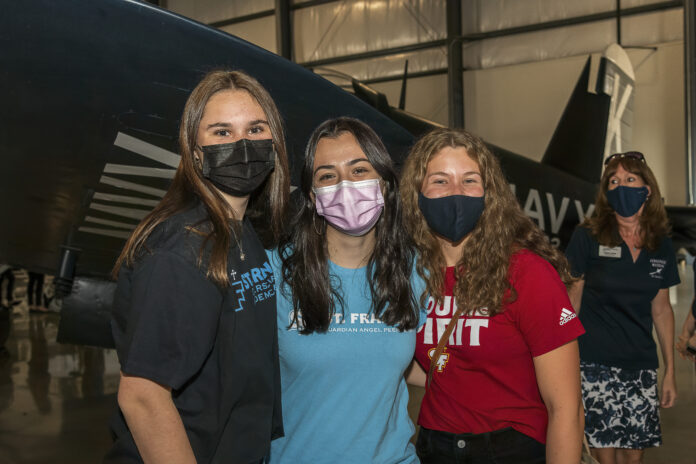The North American air show industry has an attrition problem.
Using event organizer members of ICAS as the yardstick, the number of air shows in North America has dropped 41% during the last 24 years from 311 in 1998 to 183 in 2021.
There are dozens of communities in the U.S. and Canada that had air shows in the late 1990s, but don’t anymore: Muskegon, Michigan; Page, Arizona; Columbus, Georgia; Springfield, Illinois; Tucumcari, New Mexico; Frederick, Maryland; Saskatoon, Saskatchewan; El Paso, Texas; Wilmington, North Carolina; Oklahoma City, Oklahoma; Red Deer, Alberta; and Kalispell, Montana, to name just a few.
The recent impact of COVID-19 has caused a dramatic and somewhat misleading decrease during the last two years; without COVID, the total number of shows would probably be in the 205-215 range. But experience has taught us that some of the shows that went on hiatus in 2020 and 2021 will not return, contributing to a trend that has seen four or five shows disappear every year since the beginning of this millennium.

As you can see from the graph, the trend has been trending downward, with big drops related to three specific events: the Great Recession of 2008-2009, Sequestration in 2013 and the COVID pandemic in 2020 and 2021.
Interestingly, although the Great Recession was very hard on our business in 2008, 2009 and 2010, air shows mostly rebounded in 2011, 2012 and 2013…returning to pre-recession levels of 270-280 shows per year. Although the reduction in the number of shows was less dramatic with Sequestration in 2013, the decrease proved to be more permanent. And, of course, the long-term effects of the pandemic have yet to be determined. (Note: because the numbers quoted here are ICAS memberships, they are lagging indicators. As an example, the Great Recession was a 2007-2008 event, but the reduction in number of event organizer memberships was seen in 2008, 2009 and 2010. Similarly, the challenges of Sequestration in 2013 did not affect ICAS memberships until 2014 and 2015.)
If the attrition problem is clear, the reasons for it and the solutions for mitigating the problem are less obvious and an ongoing point of discussion within our industry.
Some have pointed to the increased costs of running air shows. Even before the current spike in inflation, expenses had been on a steady upward trajectory. Fuel. Food. Fencing. Portable toilets. Tentage. Insurance. Law enforcement services. For businesses that work on small margins anyway, the increase in expenses has been unsustainable for some. And all of those dynamics are being made worse this season by inflation that is now projected to exceed 5% in 2022.
One specific source of increased expense has been singled out by some industry veterans as a significant contributor to the reduced number of shows. The costs and challenges of providing mobile arresting gear (MAG) and ground support equipment (GSE) for military performers have gone up dramatically during the last 15 years. Some shows are paying as much as $80,000 to install and operate MAG at their events. And both the costs and difficulty of securing GSE have gone up sharply over the last decade.
as a significant contributor to the reduced number of shows. The costs and challenges of providing mobile arresting gear (MAG) and ground support equipment (GSE) for military performers have gone up dramatically during the last 15 years. Some shows are paying as much as $80,000 to install and operate MAG at their events. And both the costs and difficulty of securing GSE have gone up sharply over the last decade.
Insufficient revenue has also been a significant challenge. If increases in expenses can’t be avoided, the only way to keep pace is to increase revenue. But not all air shows have been able to do that. The average cost of ticket prices in our business has nearly doubled since the early 2000s, but they are still less than $25 and that’s not enough to keep up with rising expenses. And the seduction of big-time sponsorship revenue has been mostly a tease; with the exception of a few performers, national sponsors have not yet “discovered” air shows as an effective and cost-efficient use of their event marketing dollars.
Increased competition for the attention of spectators has also been cited as a reason for the declining number of shows. Some believe that the allure of smart phones, computer games and streaming services has made all live events – not just air shows – less attractive to the public. From NASCAR tracks and NFL football stadiums to local movie theaters and live concert venues, many different types of live event promoters are finding it more difficult to tempt prospective customers out of their homes. That phenomenon has likely been a contributing factor in the demise of some of our shows. And that was a trend that was creating challenges well ahead of the pandemic.
Many military shows that were previously held annually have transitioned to an every-other-year or even every-third-year schedule. That has also contributed to the decrease in the number of shows each year.
There are some in our industry who point to the increasing number and complexity of regulations for the decrease in the number of air shows. For some show organizers, this line of thinking goes, it has been too much to keep up with.
Development in and around airports has made it increasingly difficult to find venues that can fit a traditional air show aerobatic box. In the United States and Canada, the box has helped to keep our events safe, but they do require a lot of space that can be hard to provide as residential and commercial buildings go up around the periphery of our airports.
A few industry observers have made a convincing argument that some of the attrition is due to healthy consolidation…the elimination of duplicative events in communities that previously had multiple air shows or weak shows not surviving in an increasingly demanding environment.
Which one of these factors has led to this decrease in the number of U.S. and Canadian shows? The smart money is on “all of the above.” And so, the effort to arrest the descent and stabilize the business will likely require a combination of corrections.
It will not be enough to increase ticket prices or decrease expenses. We can’t just find new airports better suited to hosting our events or make air shows more appealing to a younger, more easily distracted demographic. Reducing regulations is not enough by itself to maintain the current number of shows.
But a package of different solutions that helps to minimize the impact of all the things negatively impacting air shows will work. And those solutions are out there. There are methods and tactics available to us right now to decrease expenses and increase revenue. There are shows that are experimenting with making their events more attractive to Millennials and Generation Z-types. ICAS has been involved with the military in ongoing discussions to find solutions to problems involving MAG and GSE.
The entertainment product we offer is fundamentally sound. Air shows are inspiring, family- oriented and affordable. They are safe, conducted outdoors and appealing to a broad cross section of the public. And there’s nothing like them anywhere else in the entertainment world.
oriented and affordable. They are safe, conducted outdoors and appealing to a broad cross section of the public. And there’s nothing like them anywhere else in the entertainment world.
The further good news is that our events are well-suited to change. We have lots of space, lots of time, lots of assets, and nearly infinite options for adjusting and re-calibrating those variables to find the combination and format that works best for our changing audience base. The traditional air show model has been in place for approximately 50 years, culminating in dramatic growth throughout the eighties and nineties and a sustained period of 285-310 shows per year from the late nineties through mid-2000s. If it’s time to adjust the model that produced all of that growth and success. And our industry is well-positioned to do that.
It’s also helpful that, as an industry, we are aware that adjustments are needed. During a recent long-range planning meeting, the ICAS Board of Directors discussed these and related issues at length. Later this spring, ICAS will be announcing specific programming aimed at addressing many of these challenges. ICAS members are also very aware that the environment in which we conduct our events has changed and that we must make the necessary adjustments to keep pace with that change.
Put simply, the pandemic kicked our collective butts. But all signs point to a strong recovery in 2022, leaving us well-positioned to pro-actively tackle the challenges facing our business in 2023 and beyond. And as it has for more than half a century, ICAS will help the industry identify and implement the changes necessary to take full advantage of the opportunities in front of it.








